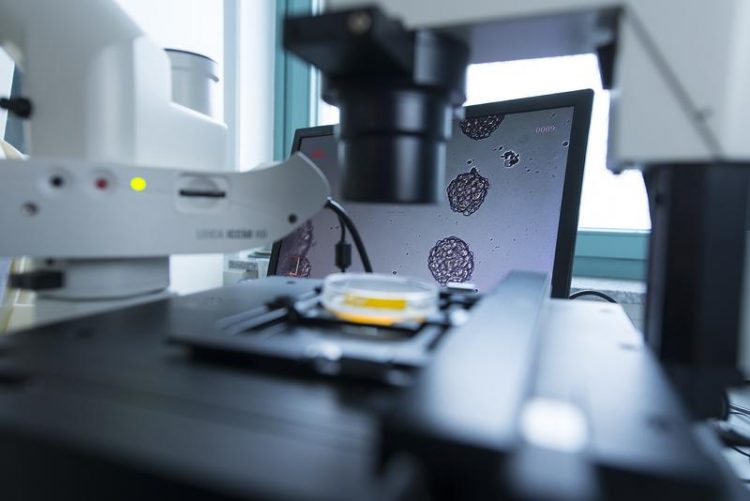Scientists discover new mechanisms of early metastatic spread in breast cancer

For their studies, the researchers culture primary mammary gland cells. This results in the formation of so-called spheres, which enable experimental investigation of metastasis. Photo: Ralf Mohr; Fraunhofer ITEM
Over decades, cancer research pursued the dogma that cancer cells seed mainly from advanced tumors – based on the finding that early diagnosis and surgical removal are decisive for curing cancer patients. Recently, however, the validity of this concept in explaining treatment success has been questioned increasingly, because patients with small tumors also develop metastases.
Furthermore, the genetic profile of disseminated cancer cells often does not show the expected similarity to the primary tumor. Derivation of disseminated cancer cells, as precursors of metastases, frequently seems to occur at early tumor evolution stages already.
Researcher teams under Prof. Christoph Klein (Regensburg) and Prof. Julio Aguirre-Ghiso (New York) for the first time ever studied mechanisms of early metastatic spread in breast cancer. They found that breast cancer formation hijacks physiological processes controlling mammary epithelial branching and expansion during adolescence and pregnancy, deregulates and uses them for tumor cell dissemination.
Once disseminated, these cells settle in other tissues and, after further genetic alterations, can grow to often life-threatening metastases in the target organ. The two research teams initially worked independently, but then collaborated and published their results simultaneously in Nature. “Our fundamentally new findings will hopefully advance cancer research substantially,” Klein explains.
The researchers hope that the proposed mechanism will provide a general framework for understanding metastasis formation. According to their findings, cancer cells first go through an early dissemination stage at low cell density at the primary site and later on switch to a proliferation stage when high cell density is reached.
However, the Regensburg scientists also found that tumor cells can “relearn” to disseminate even at later stages – from areas of low cell density. This is probably why metastases may derive from different stages of primary tumor evolution, both early and late. Since these stages comprise genetically different cells and modern therapeutic approaches often target genetic alterations, therapies targeting the seed of metastasis need to address this heterogeneity of cells to be successful.
Contact
Fraunhofer ITEM
Prof. Dr. Christoph Klein; +49-941-944-6720
christoph.klein@klinik.uni-regensburg.de
Press contact
Dr. Cathrin Nastevska; +49-511-5350-225
cathrin.nastevska@item.fraunhofer.de
http://www.item.fraunhofer.de/en/services_expertise/tumor_therapy.html
http://www.item.fraunhofer.de/en/press-and-media/press-releases/PM_Nature_Papers…
Media Contact
All latest news from the category: Life Sciences and Chemistry
Articles and reports from the Life Sciences and chemistry area deal with applied and basic research into modern biology, chemistry and human medicine.
Valuable information can be found on a range of life sciences fields including bacteriology, biochemistry, bionics, bioinformatics, biophysics, biotechnology, genetics, geobotany, human biology, marine biology, microbiology, molecular biology, cellular biology, zoology, bioinorganic chemistry, microchemistry and environmental chemistry.
Newest articles

Bringing bio-inspired robots to life
Nebraska researcher Eric Markvicka gets NSF CAREER Award to pursue manufacture of novel materials for soft robotics and stretchable electronics. Engineers are increasingly eager to develop robots that mimic the…

Bella moths use poison to attract mates
Scientists are closer to finding out how. Pyrrolizidine alkaloids are as bitter and toxic as they are hard to pronounce. They’re produced by several different types of plants and are…

AI tool creates ‘synthetic’ images of cells
…for enhanced microscopy analysis. Observing individual cells through microscopes can reveal a range of important cell biological phenomena that frequently play a role in human diseases, but the process of…





















